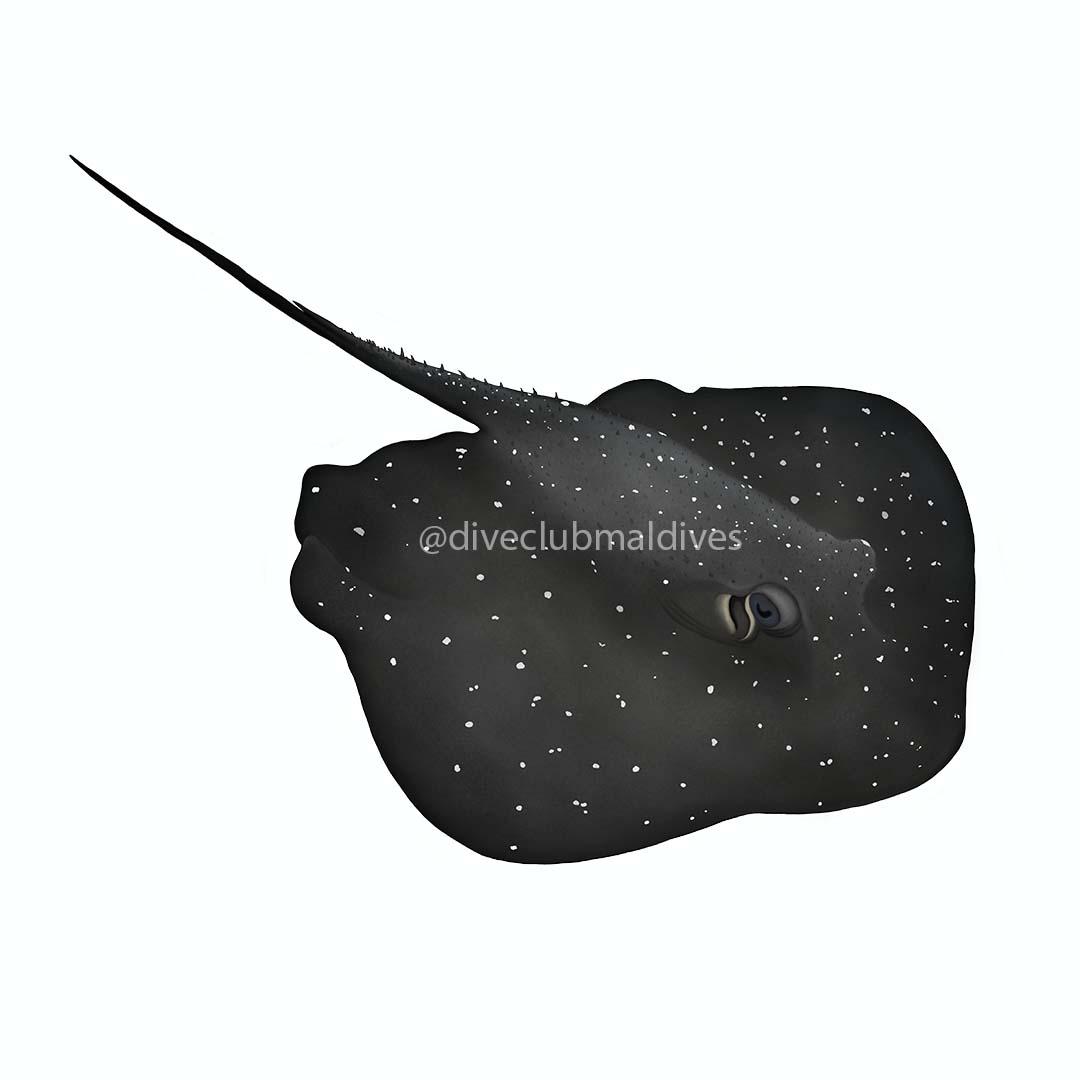English Name: Mangrove Whipray
Local Name: Lahjjehi Madi
Size: 1.4 m
Family: DASYATIDAE
Order: Myliobatiformes
Distinctive Characters: A large whipray with an oval disc that is notably longer than wide and very thick centrally. Snout short, and obtusely angular with a weakly protruding apical lobe. Anterior margins of disc straight or mildly concave. Pectoral fin apices broadly rounded. Pelvic fins very short.
Eyes small and protruding. Snout length approximately 1.5-2x combined eye and spiracle length. Mouth small with 2-7 oral papillae. Lower jaw somewhat arched. Labial furrows pronounced. Small, skirt-shaped nasal curtain with a fine fringe on the posterior margin.
Dorsum rough, but without enlarged thorns. Sparse denticles on mid-shoulders. Tail broad based then slender beyond sting; length 1.3-2.1 x disc width. Usually 1-2 caudal stings.
Colour: Dorsum brownish, yellowish, pinkish grey, or black with small scattered white flecks. Tail white beyond sting. Ventrum white in jveniles. Adults may have dark blotches on ventrum.
Habitat and Biology: Tropical seas. The mangrove whipray occurs in a wide range of inshore habitats including mangroves, estuaries, sand flats, coral reefs, and rocky substrates, from the intertidal zone to 85m.
Distribution: Urogymnus granulatus has a widespread but patchy distribution throughout the Indo-West Pacific. It is found around Madagascar and the Seychelles, from Mozambique to Kenya, from the Red Sea to Sri Lanka, Maldives, Bangladesh, in small pockets from the Andaman Islands through southeast Asia to Pulau, and south to Australia.
Remarks: The mangrove whipray feeds mostly on crustaceans; crabs and prawns. Matrotrophic viviparity. Litter size unknown. Fairly difficult to approach, will bolt if approached closely.
